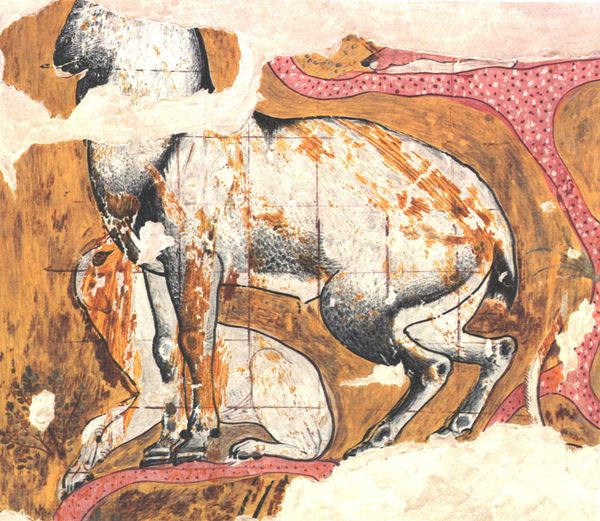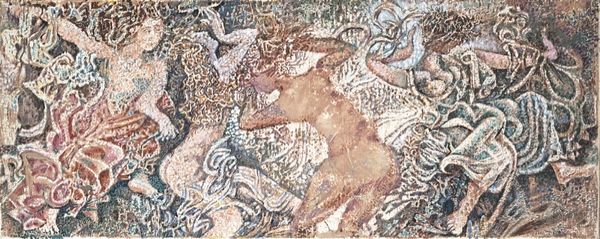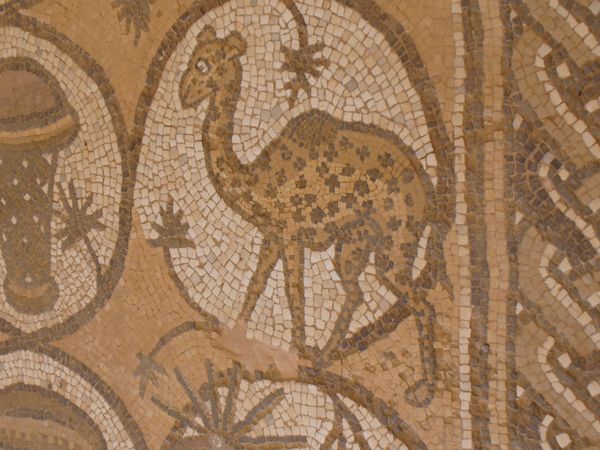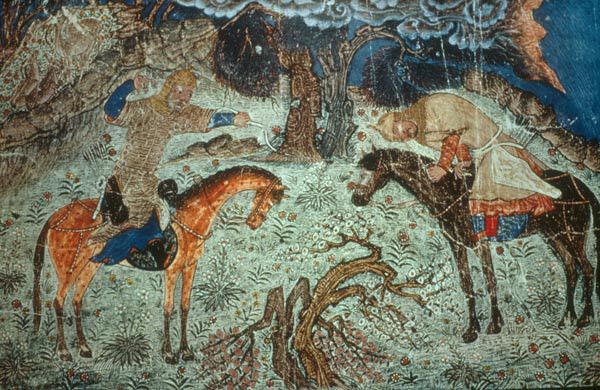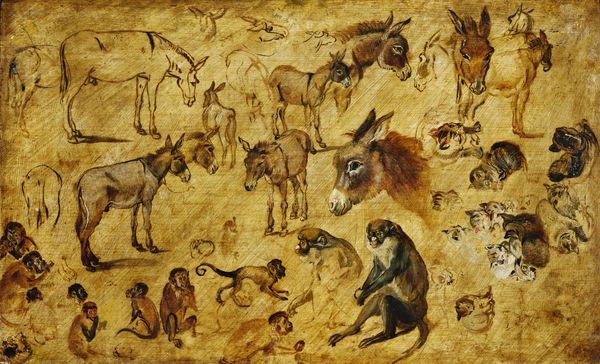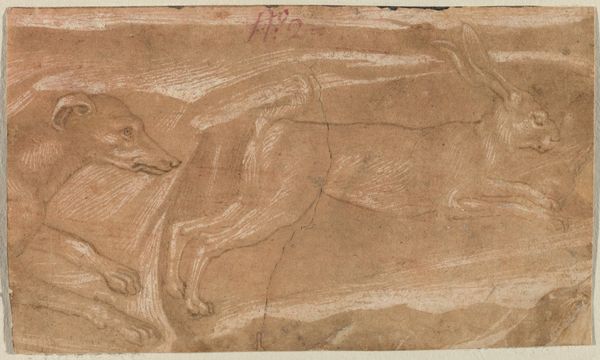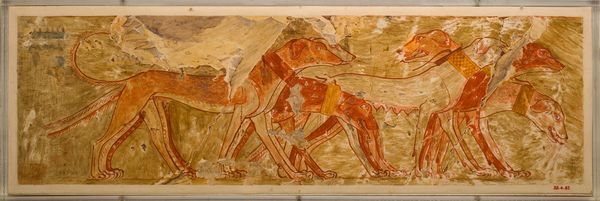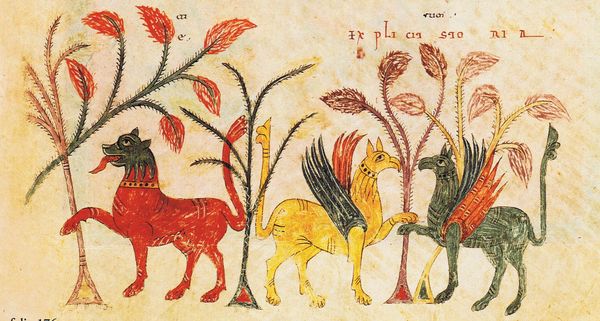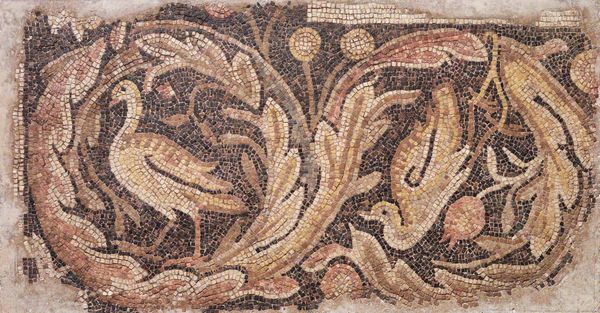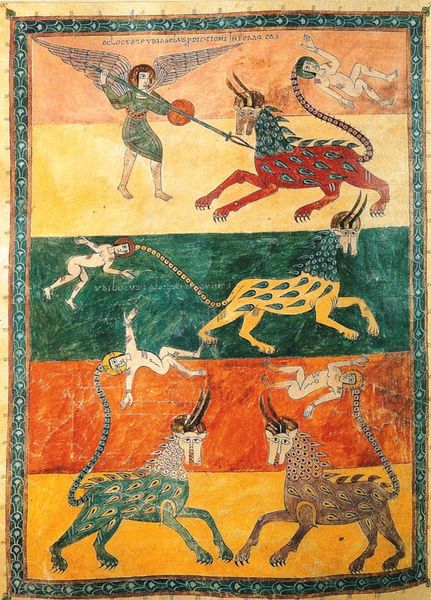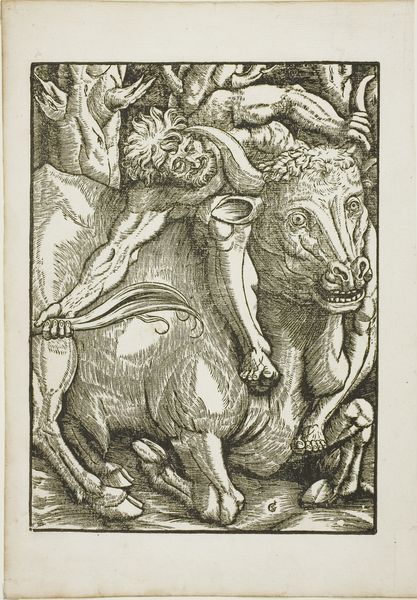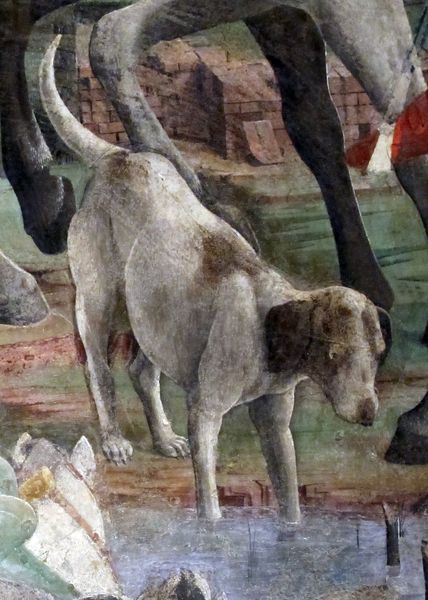
Dimensions: support: 1219 x 1270 mm frame: 1330 x 1660 x 90 mm
Copyright: © The estate of Duncan Grant | CC-BY-NC-ND 4.0 DEED, Photo: Tate
Curator: Duncan Grant, a key figure in the Bloomsbury Group, painted this artwork, titled "The Ass," some time during his prolific career. Editor: Oh, it's got this wonderful, almost dreamlike quality...like a memory fading around the edges. The colors feel earthy, grounded. Curator: Grant’s exploration of form and color here can be seen as a response to early modernist movements, challenging traditional notions of representation in the interwar period. The depiction could also relate to class and labor. Editor: I like that. It makes me think of a working animal, yes, but also this sense of dignity, standing amidst abstract, slightly ominous shapes. Almost defiant, really. Curator: I agree, and interpreting the animal figure in relation to emerging sociopolitical tensions seems apt. It certainly invites us to consider themes of identity and resilience. Editor: Absolutely. It's strange, even humorous, and yet profoundly moving. I think I'll carry the image of this defiant donkey with me for some time.
Comments
Join the conversation
Join millions of artists and users on Artera today and experience the ultimate creative platform.
tate 7 months ago
⋮
Grant drew on a wide range of artistic influences from different cultures and different times, from 6th-century Byzantine mosaics to the latest developments in contemporary painting. He was interested in both fine art and design. In 1913 he became co-director of the Omega Workshops which produced artist-designed furniture, pottery and textiles. Grant’s source image for The Ass was an 11th-century Persian painting on a ceramic bowl. But the flattening of space in Grant’s painting also shows the influence of Pablo Picasso, whose work Grant saw in London around this time. Gallery label, February 2021
